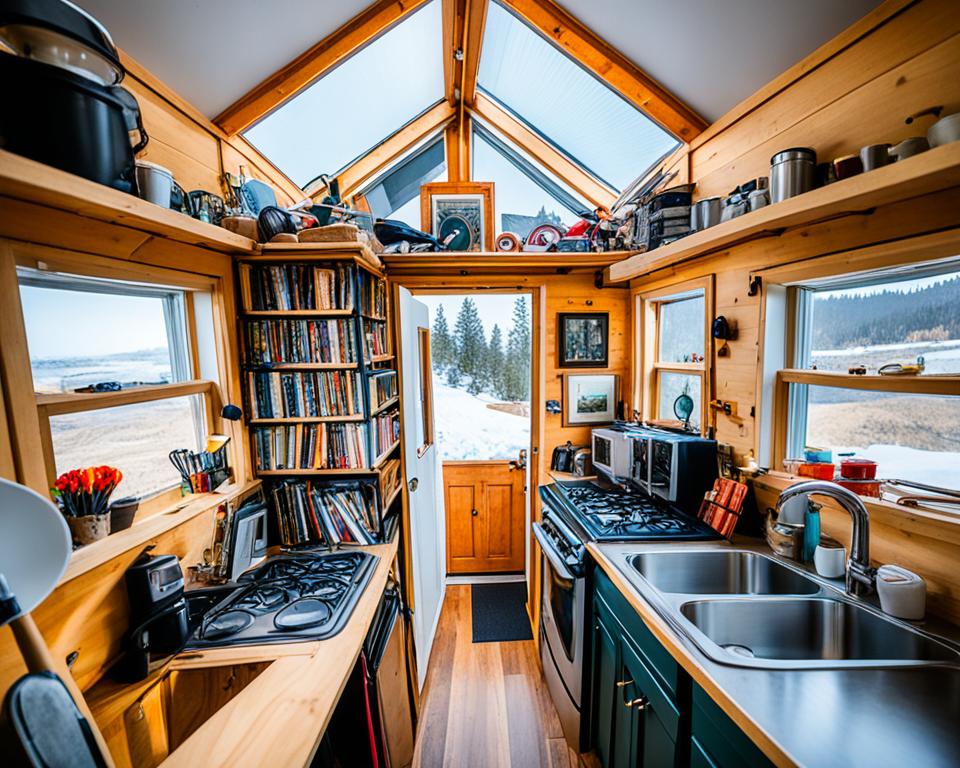Many are surprised that the average American home is over 2,600 square feet. In contrast, tiny houses are gaining popularity, usually under 400 square feet. This movement promotes living simply in small spaces. It highlights the downsides of tiny house living versus minimalism.
Tiny houses are charming and good for the planet. But, they have challenges. Limited storage space is a big problem for many. If you’ve gathered many things or have space-intensive hobbies, living in a tiny house might be hard. You often have to give up big kitchens and guest rooms for spaces that serve many purposes.
Also, complicated zoning laws make finding a place for your tiny house hard. It’s like walking through a maze. The financial side—getting loans and thinking about resale value—makes downsizing tricky. These are real issues we face when thinking about living in a tiny house.
What are the Biggest Drawbacks of Living in a Tiny House?
Living in a tiny house means dealing with the challenges of a small space. The idea of simplicity and eco-friendliness is appealing. But, there are major drawbacks to consider. These challenges affect how we live and even involve legal issues. Let’s look at these important issues.
Limited Storage and Space Constraints
The idea of living with less can be tough when you actually try it. We often have to part with belongings we love because there’s not enough room. Changing how we shop is necessary since we can’t buy in bulk due to limited storage.
Can our hobbies and passions coexist with such space restrictions?
This becomes a big issue for those needing space for their hobbies or work.
Sacrificing Full-Size Appliances
In tiny homes, the kitchen is much smaller. This means no room for large fridges, ovens, or washers. Cooking and doing laundry become difficult, making tiny living even more limited.
Challenges Entertaining Guests and Hosting Events
Hosting events in a tiny home is hard. There’s not enough space for a big dining area or guest room. This makes social gatherings tough and shows the social limits of living small.
Zoning and Legal Hurdles
There are also legal issues with tiny homes. Understanding zoning laws and building codes is complex. Sometimes, tiny homes aren’t even recognized as permanent homes. This leads to legal confusion about our tiny homes’ status.
Resale Value and Loan Difficulties
Financial issues are a part of tiny house living. Unlike traditional homes, tiny homes might lose value over time. It’s also hard to get loans for tiny homes, as banks are wary of their unconventional nature.
| Aspect | Traditional Home | Tiny House |
|---|---|---|
| Space for possessions | Ample storage options | Highly limited storage |
| Appliance Size | Full-size, wide variety | Compact, limited selection |
| Entertaining Capacity | Room for multiple guests | Restrained by space |
| Legal Recognition | Clearly defined status | Often ambiguous or unrecognized |
| Financial Viability | Easier loan access, potential value increase | Challenging loan acquisition, uncertain resale value |
Choosing to live in a tiny home means thinking about these drawbacks. We need to understand these challenges as we decide if this way of living matches our goals and daily needs.
Handling the Realities of Downsizing to a Tiny Home
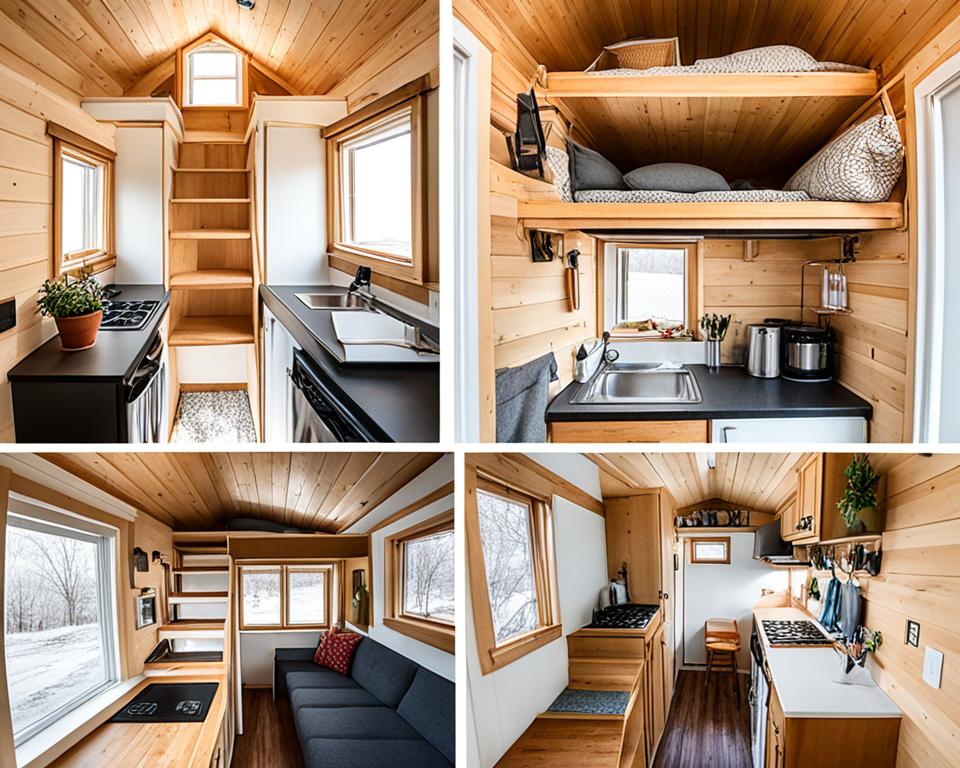
Switching to a tiny house lifestyle is about more than just less space. It’s a big choice that matches a desire for a simpler, greener way of life. Yet, dealing with the tiny house lifestyle disadvantages shows us this path has its challenges.
Going smaller has a big emotional side. It means saying goodbye to many possessions. It’s about leaving behind parts of our identity that are wrapped up in what we own. Moving into a tiny space makes us see life differently, where experiences matter more than things.
“Living small means understanding that less really can be more—that you don’t need that extra cupboard of clothing you never wear, or knick-knacks that collect dust. It’s about what those possessions give to your life and sometimes, they don’t add value. They just take up space.”
Downsizing is tough. It’s not as simple as picking books to keep or give away. It makes us question the need for everything we have. With less room, we must constantly think of ways to stay organized. Living tiny means every item has to justify its place.
- Continuous organization and decluttering
- Mindful acquisition of new items
- Focusing on multipurpose functionalities
Living small has other challenges, especially in our social life. Having guests over in a tiny home takes creativity because of the space limits. Finding smart ways to host is a must, not just an option.
| Traditional Home | Tiny House |
|---|---|
| Space for large gatherings | Intimate setting for a few guests |
| Separate rooms for privacy | Open-plan requiring innovative privacy solutions |
| Ample storage for household items | Minimal storage sparking creative solutions |
Moving to a tiny home changes us. Facing the problems with tiny house living teaches us what we truly need. We start to value a life that’s less cluttered and more meaningful. It shifts our focus from having more stuff to enjoying more experiences.
Navigating the Lifestyle Changes Associated with Tiny House Living
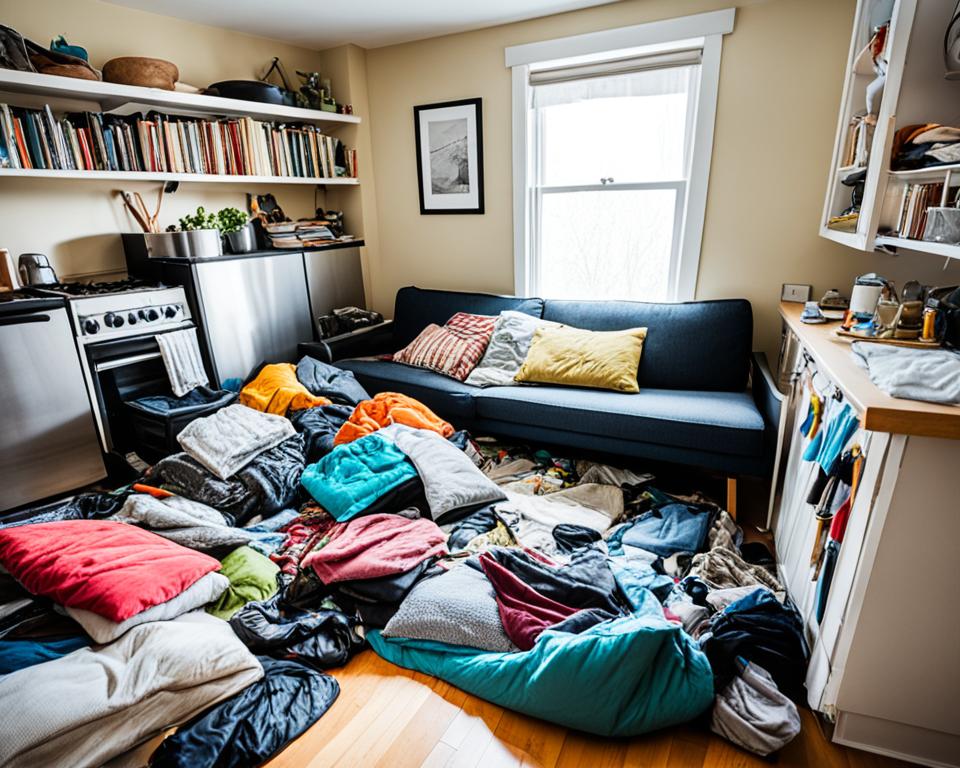
Moving into a tiny house can be a big adventure with many rewards. Yet, it comes with its own set of challenges. Living in a smaller space requires adaptability and smart planning. We’ll take a closer look at the difficulties of tiny house living. This way, you can tackle them with confidence.
Adjusting to Compact Living and Privacy Issues
Living in a tiny house means getting used to less room. Every part of the space needs to be well-thought-out. Privacy is hard to come by, as personal spaces often overlap. Creating personal nooks and using clever designs can help. These solutions allow areas to serve multiple purposes, including giving you some alone time.
Considering Special Needs for Accessibility
Access can be tricky in a tiny house. Many have beds in lofts, not great for those with mobility issues. It’s crucial to think about everyone living in the house. Considering a one-level layout or adding features to aid accessibility can make the home comfortable for all.
The Mental and Social Effects of Small Space Living
Living in a tiny house affects more than just our physical space. It can increase stress and change how we interact with friends and family. Smaller gatherings become the norm, as hosting big events gets tougher. It’s worth thinking about these changes to our social life before making the move.
| Aspect of Change | Traditional Living | Tiny House Living |
|---|---|---|
| Privacy | Seperate rooms offer ample privacy | Spaces overlap and require creative solutions |
| Accessibility | Generally designed with accessibility in mind | May require customized designs or adaptations |
| Social Interaction | Ample space for hosting and social events | Limited space affects gatherings and events |
The Financial Implications of Tiny House Ownership
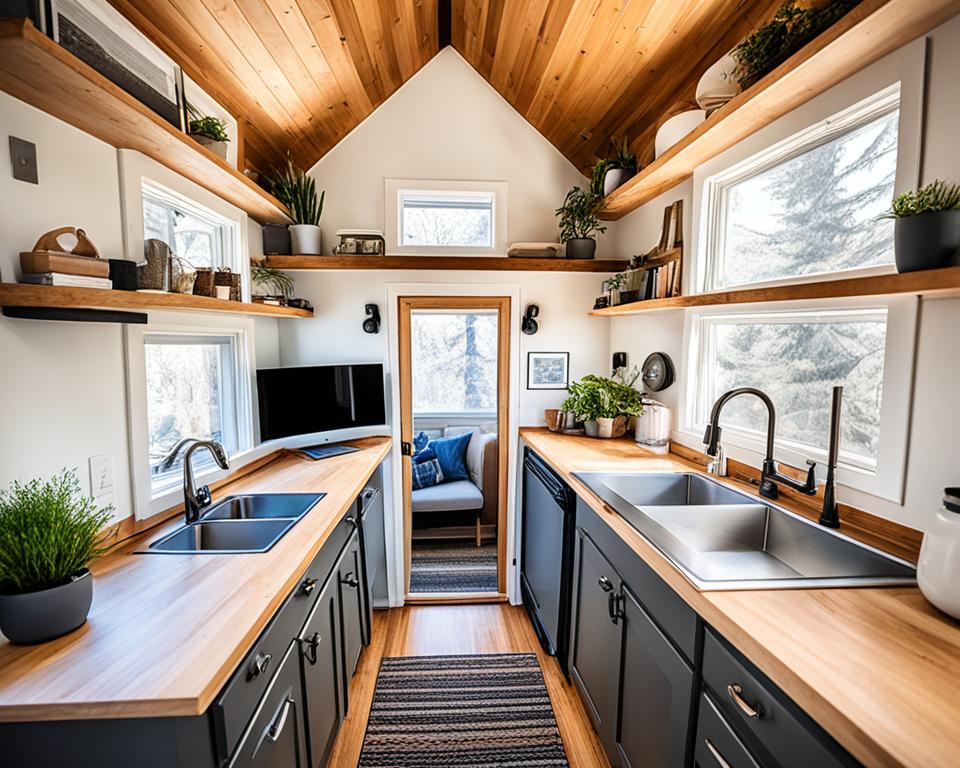
Choosing tiny house living brings some financial implications of tiny house ownership that differ from normal home costs. It’s key to look beyond the low initial cost and smaller bills. Tiny homes may cost less at first, but other financial issues can arise unexpectedly. We’ll look into this to help future tiny house owners understand their finances better.
Knowing all about tiny house finances can help you avoid turning your dream into a financial nightmare.
Tiny homes affect long-term money plans. Banks may not want to give loans for these homes, meaning fewer loan choices and higher rates. Also, selling a tiny house later might not get you the money you hoped for, making it less of the dream life you imagined.
Here’s a table showing financial differences between regular and tiny houses:
| Financial Factor | Traditional Home | Tiny House |
|---|---|---|
| Initial Cost | High (Median home price) | Lower ($30,000 to $60,000 range) |
| Financing Options | Many mortgage choices | Some personal and RV loans |
| Resale Value | Usually goes up over time | May go down or change a lot |
| Utility Costs | Higher because of more use | Lower because the space is small |
| Insurance and Tax | Normal insurance rates; property taxes | Different insurances; often less or no taxes |
As we see, the hope of lowering our living costs with a tiny house should be balanced with financial facts. Deciding if the dream or reality wins will depend greatly on our own thorough research.
We’re part of a growing group changing how we think about housing. But we need to be fully aware of any drawbacks of living in a tiny house, especially financially. Living small isn’t just about having fewer things. It’s also about avoiding unexpected money problems that could come with our new, smaller home.
Practicality and Convenience Considerations
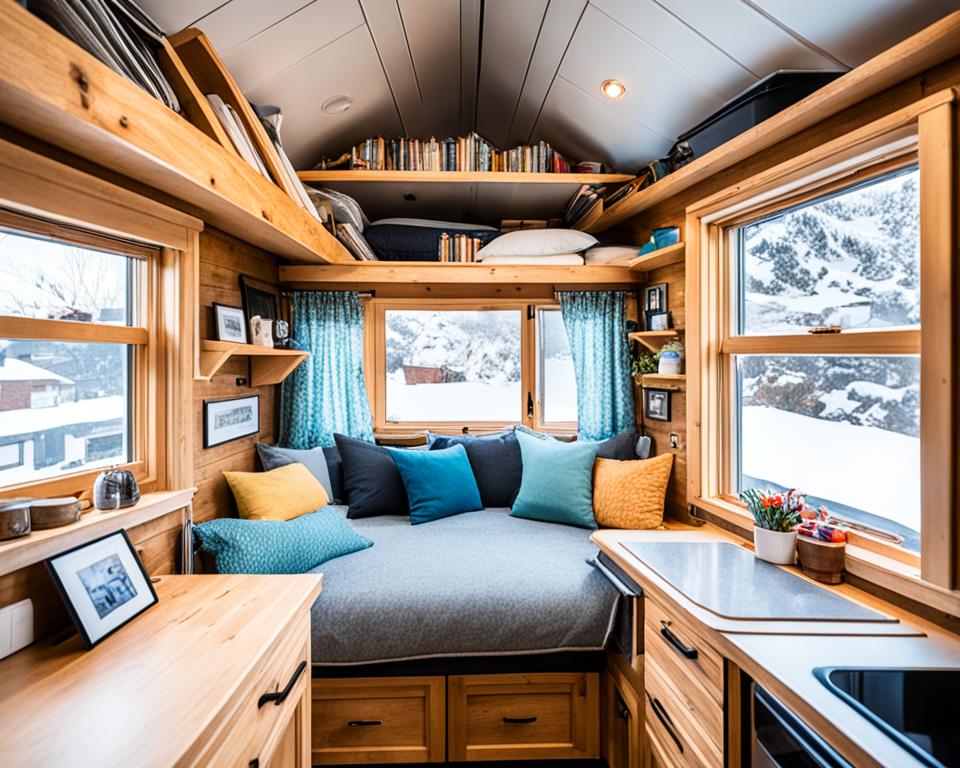
Exploring practicality and convenience of tiny house living means weighing its pros and cons. We love the simplicity and efficiency of tiny houses. But, it’s important to consider the challenges of living in such small spaces.
Tiny homes can have issues with temperature control, swinging from too hot to too cold. This requires expensive fixes to stay comfortable. Also, the dream of taking your home on the road faces realities like vehicle compatibility and finding places to park.
Let’s look closely at these factors:
| Aspect | Benefit | Challenge | Extra Costs |
|---|---|---|---|
| Energy Efficiency | Reduced utility bills | Temperature volatility | Heating/Cooling solutions |
| Potential Mobility | Freedom to relocate | Vehicle and access limitations | Transportation and setup |
| Space Rental | Varied living locations | Renting costs at RV parks | Park rental fees |
| Utilities Hookup | Self-sustainability potential | Dependency on hookups for utilities | Connection fees |
A small living space offers benefits like energy savings and being eco-friendly. Yet, we often face challenges that affect our comfort in daily life.
The freedom of having a home that moves comes with tough requirements like towing capacity and setup hassles. Each stop and detour reminds us of tiny house living downsides, like RV park fees and finding utilities. But for some, these challenges are worth it, showing that what we consider convenient can vary greatly.
“In tiny house living, practicality isn’t an inflexible code; it’s an elastic band that stretches to fit the contours of individual needs and perspectives.”
Looking into tiny living, we see a mix of simplicity and complexity. It makes us think about what truly makes a home and what brings us happiness.
Is Tiny House Living Right for You?
Tiny houses are about living simply, in a small space. They are eco-friendly and invite us to live with less. But, it’s essential to weigh the benefits against the challenges. Living in a tiny house means dealing with less room. This tests how we adapt to smaller living spaces. We have to focus on what is truly important to us.
Living small affects many parts of life, like daily habits and having guests over. It also involves money matters, like lower resale value and loan difficulties. These issues make us think carefully before choosing to live in a tiny house. We need to balance the freedom tiny living offers with its limitations.
Deciding on tiny house living needs deep thought. We consider our goals, desire for minimalism, and how we handle challenges. What are the biggest drawbacks of living in a tiny house for us? For some, tiny living means freedom and living intentionally. For others, the challenges are too big. It’s not about good or bad choices. It’s about whether tiny living fits your dreams and goals.

